Why some bathrooms feel expansive while others feel cramped?
The secret could be hidden in the tile orientation.
Choosing to lay tiles horizontally or vertically is a decision more crucial than it appears at first glance.
It’s a subtle yet impactful choice that can significantly enhance or diminish your bathroom’s spaciousness, elegance, and overall vibe.
This expert guide explores the visual effects of horizontal vs vertical tile installations, guiding you toward the ideal option to enhance the look and feel of your space.
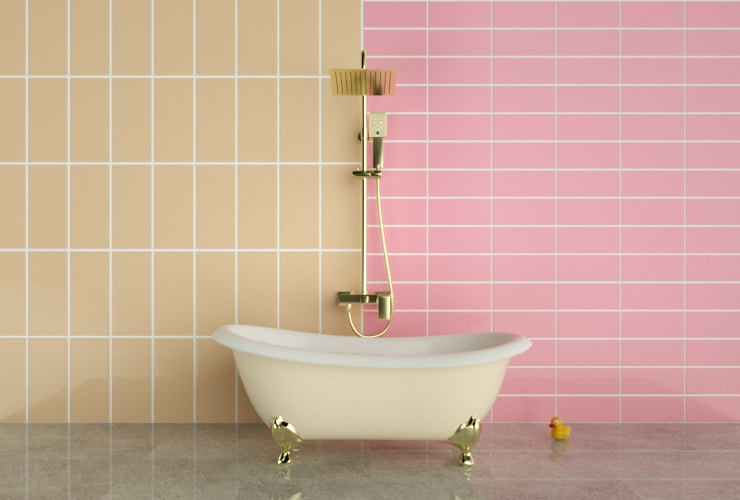
Horizontal Bathroom Tiles
A horizontal tile layout can make your bathroom space look wider than it actually is.
This is an option for those with a high ceiling and limited floor space.
This layout is best done with smaller tiles to create more depth.
You can also use mosaics to exaggerate the look.
Using contrasting tile colors to create lines will also emphasize depth.
Vertical Bathroom Tiles
Tiles that are laid out vertically can add height to a small bathroom.
If you have limited floor space, but have big walls, this can be a great choice.
This visually opens up the room to make the ceiling look higher than it actually is.
You may also want to opt for larger tiles instead of smaller ones because having lots of grout joints in this layout can make the bathroom look cramped.
You can also use contrasting tile colors to create lines.
Adding vertical lines, such as tiles with stripes, can draw the eye up.
Popular Bathroom Tile Patterns
You don’t have to stick with only vertical or horizontal tile options for your bathroom.
You can be creative and experiment with other popular tiling patterns.
These can give an interesting take on your bathroom and make it visually more appealing.
Straight Lay Tile Pattern
This is a basic tile layout that doesn’t need a lot of thought.
It is a common pattern that is used for both rectangular and square tiles.
With this pattern, the tiles are laid in a straight line.
This creates a simple grid that is timeless and clean.
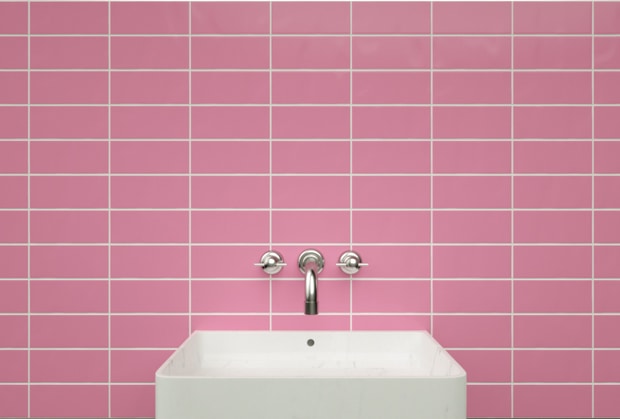
You can play around with the grout to add contrast and drama to a rather simple look.
This is also the easiest to install and is most versatile.
Horizontal or vertical tiles are usually set in a straight lay pattern.
It’s an easy choice if you don’t want anything too complicated.
Brick Tile Pattern
The brick layout is a popular pattern that has been around for decades.
As the name suggests, its layout follows the brick wall.
Typically, each tile row is offset by half of a tile’s width.
The most common brick tile pattern is horizontal.
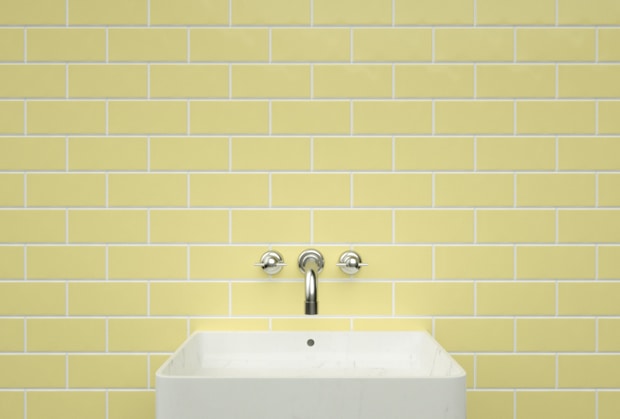
If you want your bathroom to look taller, you can also do the brick pattern vertically.
This creates long horizontal lines that subtly widen your bathroom.
This is a timeless look that can work in your bathroom.
There’s one variation where each tile is set on two other tiles.
This layout works best with a contrasting grout as it emphasizes the lines.
Herringbone Tile Pattern
This tile pattern just recently came into the spotlight.
However, it has been used hundreds of years back in building brick roads.
The herringbone is done by laying the tiles in zigzag formations.
It got its name for looking like the bones of a herring fish.
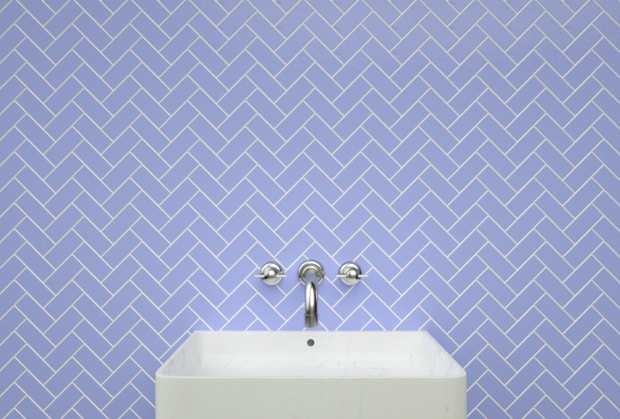
However, this might cost you a little more as the tile pattern requires extra cutting to make the edges compatible.
Just like the brick pattern, you also need a contrasting grout to emphasize the lines.
The herringbone tile pattern looks uniform and sophisticated.
It adds energy to the room by creating an accent.
This can be great for adding an accent wall to your bathroom.
However, don’t use it on a large wall as this can be too overwhelming.
Checkerboard Tile Pattern
With a checkerboard pattern, you’ll instantly know that you are laying your tiles like a checker board.
This works for black and white tiles or those with contrasting colors.
The tiles can be laid out in either straight or diamond pattern.
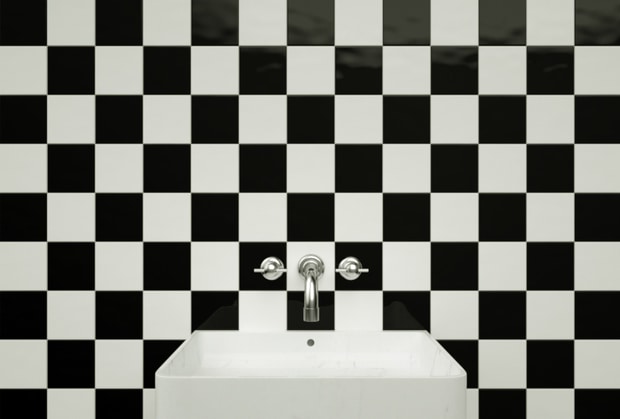
A checkerboard pattern creates a striking look.
It is also great for adding a classic and retro look to your bathroom.
This can be perfect for floors or an accent wall.
When using a checkerboard tile layout, match it with solid colors and simple decoration.
Complex colors and too much décor will almost always clash with a checkerboard pattern.
Diagonal (Diamond) Tile Pattern
The diagonal pattern is another take from the straight lay pattern.
It is just laying out your tiles straight but at a 45-degree angle.
When using square tiles, it can create a diamond look.
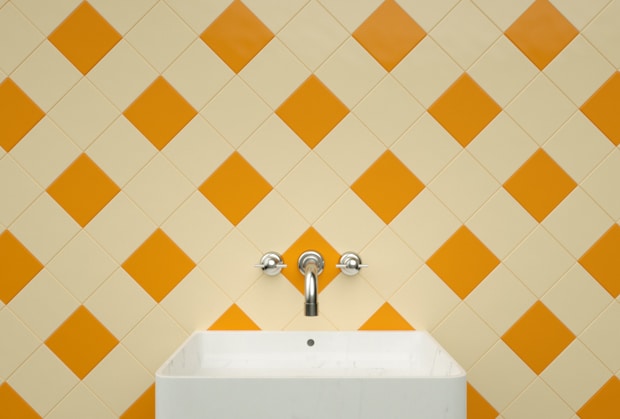
This look works best in small spaces.
The grout lines spread across the space and make it look larger than it actually is.
You can also use alternating colors for the diagonal tile layout.
This is also a great floor tile pattern for an oddly-shaped bathroom.
It takes the attention off the room’s irregular features and ultimately makes it feel larger.
Basketweave Tile Pattern
Although this is not a somewhat popular tile pattern, this is a bold design that some homeowners might like for their bathrooms.
The pattern is similar to the stitching in a woven basket.
To create a basketweave tile pattern, lay two or more rectangular tiles together to create a square.
When you lay the first set of tiles horizontally, you lay the next one vertically and so on.
Doing so creates a textured look.
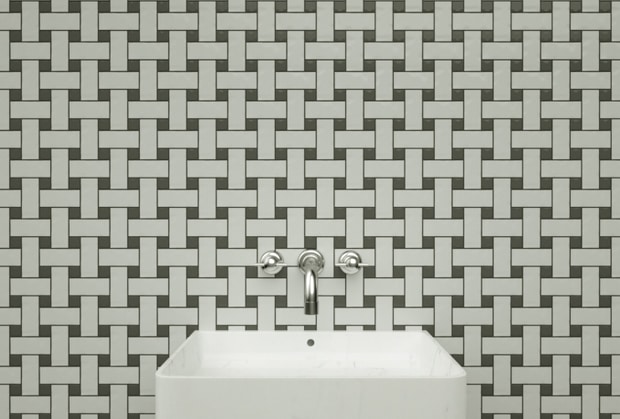
It would also be best to use a contrasting grout for this kind of layout.
The basketweave tile pattern is great for adding drama to your bathroom.
It also works best for small spaces.
You don’t need extra cutting of tiles for the basket weave, unlike the herringbone.
So it’s doable for homeowners who want to DIY.
Wrapping Up
When choosing how to layout your bathroom tile, you need to consider your space and the look that you want to achieve.
Knowing what you want to highlight in your bathroom is essential, as well.
Do you want to create an accent wall to add a point of interest?
Do you want to make your bathroom feel larger or taller?
Would you like to add some drama?
If you want to make your space taller, the vertical layout will work for you.
To achieve a wider feel for your bathroom, you can opt for a horizontal layout.
Although vertical and horizontal layouts are the most common bathroom tile layouts, there are more options that you can choose from.
Try something new if you feel adventurous.
There is no right or wrong answer in choosing a bathroom tile layout.
Look for inspiration that fits your style and budget.
Take your time and consider the different tile patterns that you can do for your bathroom.

